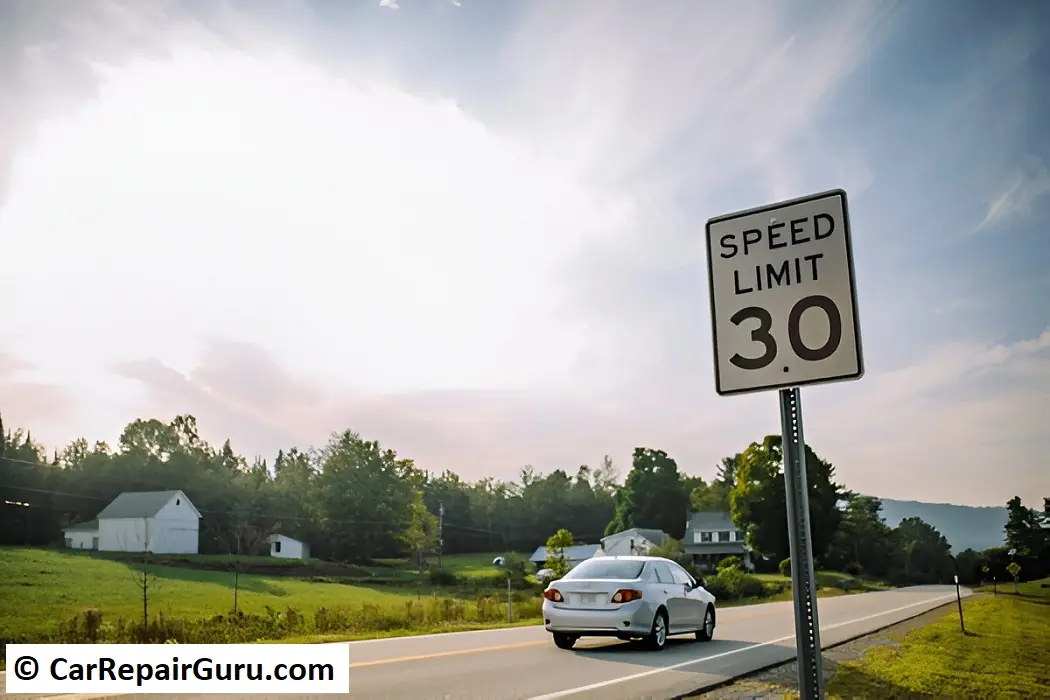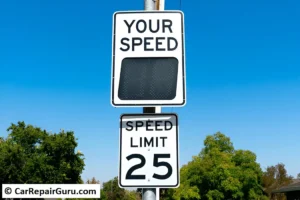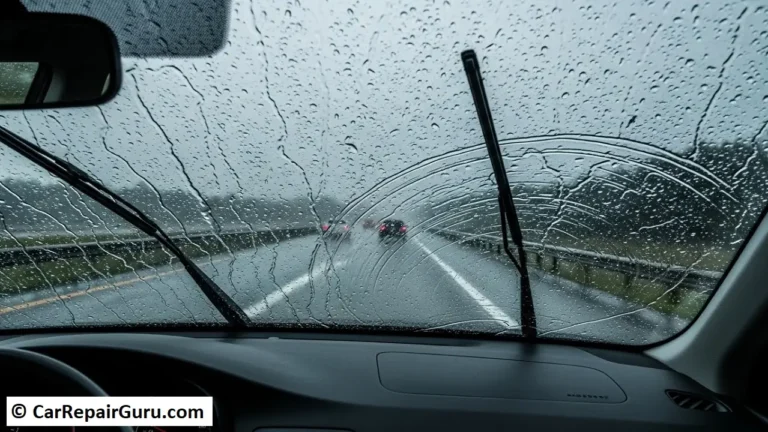
Speed limits are a fundamental part of road safety and traffic regulation. They define the maximum legal speed at which vehicles can travel on different types of roads, helping to reduce accidents, improve traffic flow, and enhance fuel efficiency. By setting clear speed guidelines, authorities aim to create safer driving conditions for everyone—drivers, pedestrians, and cyclists alike.
The concept of speed limits dates back to the early days of automobiles. The first recorded speed limit law was introduced in the United Kingdom in 1865 under the Locomotive Act, which restricted vehicles to just 2 mph in cities and 4 mph in rural areas. As cars became faster and road networks expanded, governments worldwide developed more structured speed regulations. Today, speed limits vary widely depending on location, road conditions, and safety considerations, ensuring that drivers operate their vehicles responsibly and in accordance with the law.
Types of Speed Limits
Speed limits are categorized into different types based on how they are established and enforced. Understanding these distinctions helps drivers comply with traffic laws and stay safe on the road.
Statutory Speed Limits
Statutory speed limits are predefined by law and apply universally to certain road types, regardless of signage. These limits vary from country to country and even between states or regions. For example:
- 25 mph in residential areas to protect pedestrians and cyclists.
- 55 mph on rural highways to balance safety with efficient travel.
- 70 mph on major interstates where road conditions allow for higher speeds.
These limits are set based on historical data, road safety studies, and common driving behavior. Since they are legally defined, drivers are expected to know and follow them even if no signs are posted.
Posted Speed Limits
Unlike statutory limits, posted speed limits are displayed on road signs and can differ from standard statutory speeds. These limits are determined based on engineering studies that assess factors such as:
- Road design and traffic flow.
- Accident history in the area.
- Nearby pedestrian activity and environmental conditions.
Authorities periodically review and adjust posted limits to reflect changes in road usage or safety concerns.
Special Condition Speed Limits
Some speed limits apply only under specific conditions:
- School Zone Speed Limits: Typically 15-25 mph, these protect children and vary by time of day or flashing signals.
- Work Zone Speed Limits: Temporary reductions to protect road workers and reduce accident risks. Violating these can lead to heavier fines.
- Variable Speed Limits: Adjusted dynamically based on traffic congestion, weather, or road hazards, often controlled by electronic signs.
Each type of speed limit plays a role in ensuring safe and efficient travel for all road users.
Factors Influencing Speed Limit Establishment

Setting speed limits isn’t an arbitrary decision—it’s a carefully calculated process that involves multiple factors. Governments and transportation agencies conduct thorough studies to determine appropriate speed limits for different roadways. Here are the key factors that influence speed limit establishment:
1. Engineering Assessments and Speed Studies
Before setting or adjusting speed limits, traffic engineers conduct speed studies to analyze real-world driving behavior. One common approach is the 85th percentile rule, which suggests that the speed limit should be set at a level that 85% of drivers naturally follow under normal conditions. This helps ensure that the majority of drivers feel comfortable and safe while also reducing sudden speed variations that could lead to accidents.
Engineers also consider factors such as:
- Road width and lane structure.
- Presence of curves, inclines, or intersections.
- Sight distance for stopping safely.
2. Roadway Characteristics: Type, Features, and Setting
Different types of roads require different speed limits based on their design and function. For example:
- Highways and interstates are designed for high-speed travel, so they typically have speed limits of 55-75 mph depending on location.
- Residential streets prioritize pedestrian safety, leading to lower speed limits of 25-30 mph.
- Urban roads with heavy traffic and frequent intersections often have speed limits between 35-45 mph.
Other road features, such as the presence of medians, traffic signals, and roundabouts, also influence speed limit decisions.
3. Traffic Volume and Patterns
The number of vehicles using a road at different times of the day significantly impacts speed limits. High-traffic areas, such as downtown streets or commuter highways, may require lower limits to accommodate congestion and minimize accidents. Meanwhile, rural highways with lighter traffic can often support higher speed limits without increasing crash risks.
Additionally, peak hours, seasonal variations, and the presence of commercial vehicles or cyclists can influence how speed limits are set and enforced.
4. Safety Considerations: Crash History and Pedestrian Activity
Speed limits are frequently adjusted based on accident data and pedestrian activity. Authorities analyze past crash reports to identify dangerous areas where speed reduction could help prevent collisions. If a road has a high rate of:
- Fatal crashes, a speed limit reduction may be necessary.
- Pedestrian crossings, limits may be lowered to improve safety.
- Frequent speeding violations, additional enforcement methods may be introduced, such as speed cameras or traffic calming measures.
By considering these factors, transportation agencies aim to strike a balance between efficiency and safety, ensuring that speed limits support smooth traffic flow while minimizing risks for all road users.
Variations in Speed Limits Across Regions
Speed limits are not universal; they vary significantly based on location, road type, and governmental policies. Understanding these variations helps drivers navigate different regions safely and legally.
1. Differences Between Rural and Urban Areas
One of the most noticeable variations in speed limits is between rural and urban areas. The reasoning behind this distinction is based on road design, traffic density, and safety considerations.
- Urban Areas: Speed limits tend to be lower due to high traffic volume, frequent intersections, pedestrian activity, and cyclists. Typical urban speed limits range from 25-45 mph in the U.S. and similar limits in most developed countries.
- Rural Areas: These roads generally have higher speed limits due to fewer intersections and lower pedestrian activity. In the U.S., rural highways typically have limits between 55-75 mph, while some states allow speeds of 80 mph on certain open highways.
- Suburban Roads: These areas serve as a middle ground, with speed limits often set between 35-50 mph, depending on local traffic patterns and population density.
The key factor in setting these limits is balancing traffic efficiency and safety—lower speeds in populated areas reduce accident severity, while higher speeds in rural areas improve travel efficiency.
2. State-Specific Maximum Speed Limits in the U.S.
In the United States, each state has the authority to set its own maximum speed limits, leading to variations across the country. Some states prioritize higher speed travel, while others enforce stricter limits for safety reasons. Here are some examples:
- Highest Speed Limits: States like Texas and Utah have the highest posted limits, reaching up to 85 mph on select highways.
- Moderate Limits: Most states, including California, Florida, and New York, set maximum highway speed limits between 65-75 mph.
- Lower Limits: Some northeastern states, such as Hawaii and Rhode Island, maintain lower maximum speed limits of 55-65 mph, primarily due to road conditions and traffic density.
Even within states, speed limits can vary based on terrain, weather conditions, and local regulations. Some areas also use nighttime speed limits, which are lower to improve visibility and safety during low-light conditions.
3. International Comparisons: Countries with No General Speed Limit
While most countries enforce strict speed limits, there are exceptions. One of the most famous examples is Germany’s Autobahn, where certain sections have no general speed limit. However, even on these stretches, a recommended speed of 130 km/h (81 mph) is advised, and some areas do have regulated limits for safety reasons.
Other international variations include:
- United Kingdom: Motorways have a maximum speed limit of 70 mph (113 km/h), while urban areas are typically limited to 30 mph (48 km/h).
- Australia: Speed limits range from 50 km/h (31 mph) in cities to 110-130 km/h (68-81 mph) on rural highways, depending on the state.
- Japan: Expressways have speed limits typically between 80-100 km/h (50-62 mph), while urban roads have much lower limits due to high pedestrian
Impact of Speed Limits on Road Safety

Speed limits play a critical role in reducing accidents, controlling traffic flow, and enhancing overall road safety. Setting appropriate speed limits helps minimize collisions and ensures a safer driving environment for motorists, pedestrians, and cyclists.
1. Relationship Between Speed Limits and Accident Rates
Research consistently shows a direct correlation between speed limits and accident rates. Higher speeds reduce a driver’s reaction time and increase stopping distances, leading to more severe crashes. Some key findings include:
- A 5% increase in speed leads to an approximate 10% increase in crash risk and a 20% increase in fatal crash risk (according to the World Health Organization).
- A study by the National Highway Traffic Safety Administration (NHTSA) found that exceeding posted speed limits is a leading cause of fatal accidents, contributing to about 30% of traffic deaths annually in the U.S.
- Lowering speed limits in urban areas has been proven to reduce pedestrian fatalities significantly, as the risk of death at 30 mph is nearly 40%, while at 20 mph, it drops below 10%.
2. Studies on Driver Compliance and Enforcement Effectiveness
Despite the importance of speed limits, driver compliance varies widely. Studies suggest that enforcement plays a crucial role in ensuring adherence:
- A study by the Insurance Institute for Highway Safety (IIHS) found that areas with consistent speed enforcement (speed cameras, police patrols) reported a 20-30% reduction in speed-related crashes.
- The 85th percentile rule—which sets speed limits based on the speed that 85% of drivers naturally follow—has been debated. Some argue that it reflects realistic driving behavior, while others claim it leads to increased limits over time, reducing safety.
- Speed camera programs in countries like Australia and the UK have led to 30-40% reductions in speed-related crashes, proving the effectiveness of automated enforcement.
3. Case Studies Highlighting the Effects of Speed Limit Changes
Case Study 1: Sweden’s Vision Zero Initiative
Sweden lowered urban speed limits from 50 km/h to 30 km/h (31 mph to 19 mph) in pedestrian-heavy areas. As a result:
✅ Fatalities dropped by 50% in affected zones.
✅ Pedestrian survival rates increased significantly.
✅ The program inspired similar changes in other European countries.
Case Study 2: U.S. Speed Limit Increase on Highways
When the U.S. repealed the National Maximum Speed Law (55 mph) in 1995, some states raised highway speed limits to 70-75 mph. The result:
❌ Fatal crashes increased by 3-5% in states that raised limits.
❌ Higher severity of accidents due to increased impact forces.
These case studies highlight how speed limits, when strategically adjusted, can enhance or compromise road safety, emphasizing the importance of data-driven policies.
Recent Developments and Changes in Speed Limits
Speed limits are constantly evolving as governments and traffic authorities assess new data, safety concerns, and technological advancements. Recent years have seen notable adjustments in speed regulations worldwide to improve road safety and traffic efficiency.
1. Notable Recent Adjustments in Speed Limits
- United States: Several states have adjusted highway speed limits. Texas continues to have the highest posted speed limit in the U.S. at 85 mph, while other states like Oregon and Virginia have lowered limits in urban areas to enhance pedestrian safety.
- United Kingdom: In 2023, Wales reduced the default speed limit on residential roads from 30 mph to 20 mph, aiming to decrease pedestrian fatalities and improve urban livability.
- France: The government reduced rural road speed limits from 90 km/h (56 mph) to 80 km/h (50 mph), leading to a decline in fatal crashes. However, public backlash resulted in some regions reinstating higher limits.
- Germany: While the Autobahn still lacks a general speed limit, there is increasing political debate about introducing a 130 km/h (81 mph) cap to reduce emissions and enhance safety.
2. Emerging Trends and Discussions in Speed Regulation
- Smart Speed Limits: Many cities are testing variable speed limits that adjust based on weather, congestion, and accidents using digital signage and AI-driven traffic systems.
- Environmental Concerns: Countries are exploring lower speed limits to reduce emissions, as slower speeds improve fuel efficiency and decrease pollution.
- Vision Zero Policies: More cities are adopting “Vision Zero” strategies, aiming to eliminate traffic deaths by lowering speed limits and increasing enforcement.
With advances in autonomous vehicles and AI-based traffic management, speed regulations will likely continue to evolve in response to safety data and technological progress.
Conclusion
Speed limits play a crucial role in road safety, traffic efficiency, and environmental sustainability. They vary based on location, road type, and regional regulations, with ongoing adjustments to reflect new safety data and technological advancements. Studies show that appropriate speed limits reduce accidents, improve pedestrian safety, and enhance overall traffic flow.
As governments and traffic authorities continue to analyze crash data, enforce regulations, and implement smart speed systems, setting the right speed limits remains essential. Ensuring compliance through public awareness and enforcement will help create safer roads for everyone, reducing fatalities and making transportation more efficient.
FAQs
What is the purpose of speed limits?
Speed limits are designed to enhance road safety by regulating the maximum speed at which vehicles can travel, reducing the likelihood of accidents.
How are speed limits determined?
Authorities consider factors such as road type, traffic volume, accident history, and environmental conditions when setting speed limits.
Why do speed limits vary between urban and rural areas?
Urban areas typically have lower speed limits due to higher pedestrian activity and traffic density, while rural areas may have higher limits due to less congestion.
What are variable speed limits?
Variable speed limits are dynamic and can change based on real-time road conditions, traffic flow, or weather conditions to enhance safety.
How do speed limits impact fuel efficiency?
Driving at moderate speeds can improve fuel efficiency, while excessive speeds often lead to higher fuel consumption.





